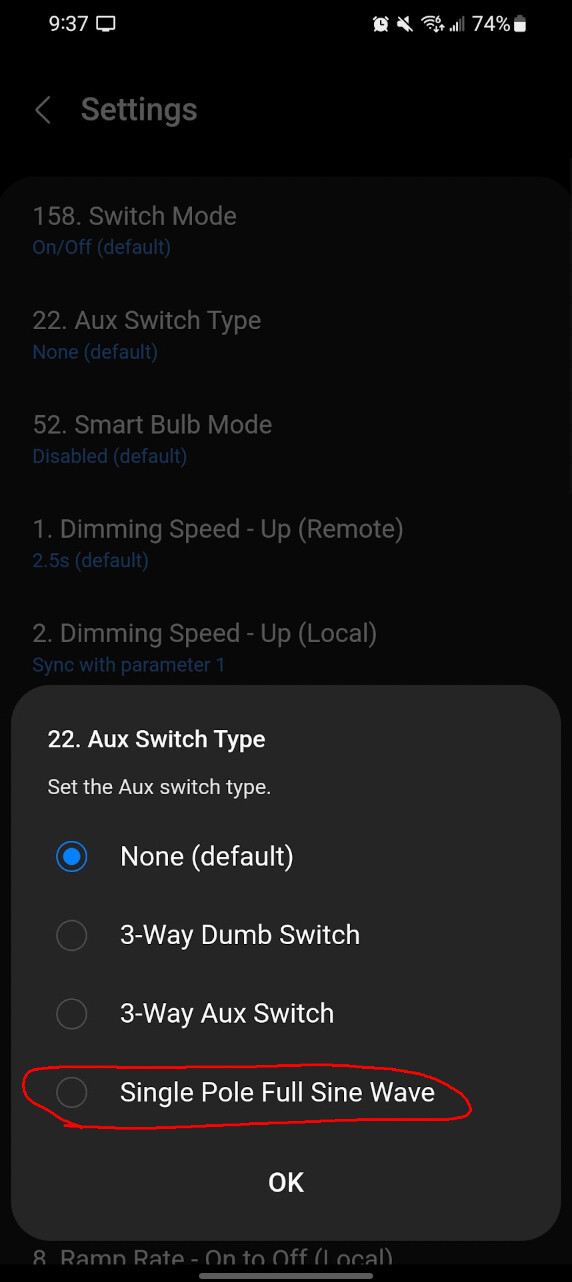I know I’m about to start a flurry of responses with this, but I wanted to at least keep everyone in the loop of what we’re testing against some of these concerns.
I’ll start with the first one because I’m not quite ready to discuss the second one as we’re still tweaking and testing.
One of the concerns is this switch needs to be capable of turning things completely on and off in order to be called an on/off switch.
We have been testing a parameter that allows for a full sine wave and I personally had a situation where I have a florescent ballast in my closet that hummed like crazy when I put the switch on it – even in on/off mode.

Testing the, “full sine wave” parameter eliminated all the humming and the light works as intended.
A few notes before watching the videos:
- You’ll have to turn up the volume on the first one to hear the buzzing – I can try to get a better one tonight, I was just excited to test it yesterday
- I still had the 500ms delay on so keep that in mind
- I am talking weird bc I was trying to be quiet – I swear I’m not creepy
- I found out about this parameter when I was in the basement and immediately went upstairs to test it out and when I say immediately, I mean I ran up both flights of stairs so I was out of breath (I tested it with full sine wave first, that’s why I’m panting like crazy in the second video, but normal in the first)
Before (No Full Sine Wave)
After (Full Sine Wave)
After some further testing, we plan to roll this out as a beta firmware. We still stand by the fact that it’s not UL rated for exhaust or ceiling fans and for safety concerns, these should not be used on outlets, but this should at least help with some buzzing and other lights that don’t fully turn off.
EDIT: Forgot to share the oscilloscope reading of this:
EDIT 2: Forgot to also mention that as of right now this is only available in a neutral, single-pole setting.
–
And if you think this is exciting, wait until I’m able to talk about the second feature that’s coming…
